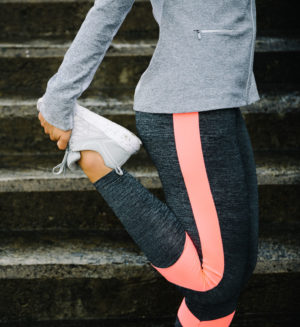 I have written about the benefits of stretching in the past. However, there are two types of stretching exercises. The classical stretch is known as static stretching, while a newer type is called dynamic stretching and that applies more to athletic activity. Neither is better than the other, and static stretching is necessary to maintain function for those who have chronic pain. Dynamic stretching is part of a process to maximize performance, especially in sports.
I have written about the benefits of stretching in the past. However, there are two types of stretching exercises. The classical stretch is known as static stretching, while a newer type is called dynamic stretching and that applies more to athletic activity. Neither is better than the other, and static stretching is necessary to maintain function for those who have chronic pain. Dynamic stretching is part of a process to maximize performance, especially in sports.
The importance of static stretching is to maintain function within the body. It allows us to maintain range of motion of joints. It enhances the flexibility of our muscles. It is also improves circulation and reduces risks of injuries. The more normal the length and function of the muscles, the better the muscles work. When one has pain, it is also important that stretching be maintained equally from sided to side in the body and all areas.
Stretching Techniques
Technique for static stretching is also important. A slow, steady stretch and holding the body in a stretched position for ten to thirty seconds is important. Avoid bouncing, since it may cause micro-trauma to the muscle fibers. To prevent imbalance, side to side stretching (for instance both legs) as well as stretching opposing muscles, is important.
Dynamic stretching is using progressive movement to maximize muscle function and ability. A good example would be the warm-up exercises for a figure skater, gymnast or dancer. These athletes start with slow movements and partial stunts as they first begin their practice. After a short warm-up period, they begin to do more aggressive moves and complex tasks. They start slow and then move toward more explosive motions.
If you have issues with chronic pain, mastering static stretching is essential. Tight muscles and joints become painful, and stretching improves the health of the muscle and joints, and it also improves circulation. Stretching absolutely needs to be balanced. Imbalanced stretching can lead to one area improving while another may become painful.
There are many resources to learn stretching routines, from physical therapists, to books and even phone apps. Classes like Yoga or Pilates can also help with stretching and may increase the fun and motivation by performing the activity with others. Lastly, stretching usually needs to be a daily activity, and often can be done in small segments of just a few minutes in your free time. Since stiffness is often worse in the morning, starting the day with stretching and ending the day for a few minutes is a golden recipe.
 Below is part one of a three part series on exercise to control chronic pain. Part one is on stretching, and the next two parts will be on developing an exercise program and the importance of conditioning.
Below is part one of a three part series on exercise to control chronic pain. Part one is on stretching, and the next two parts will be on developing an exercise program and the importance of conditioning. One of the three
One of the three